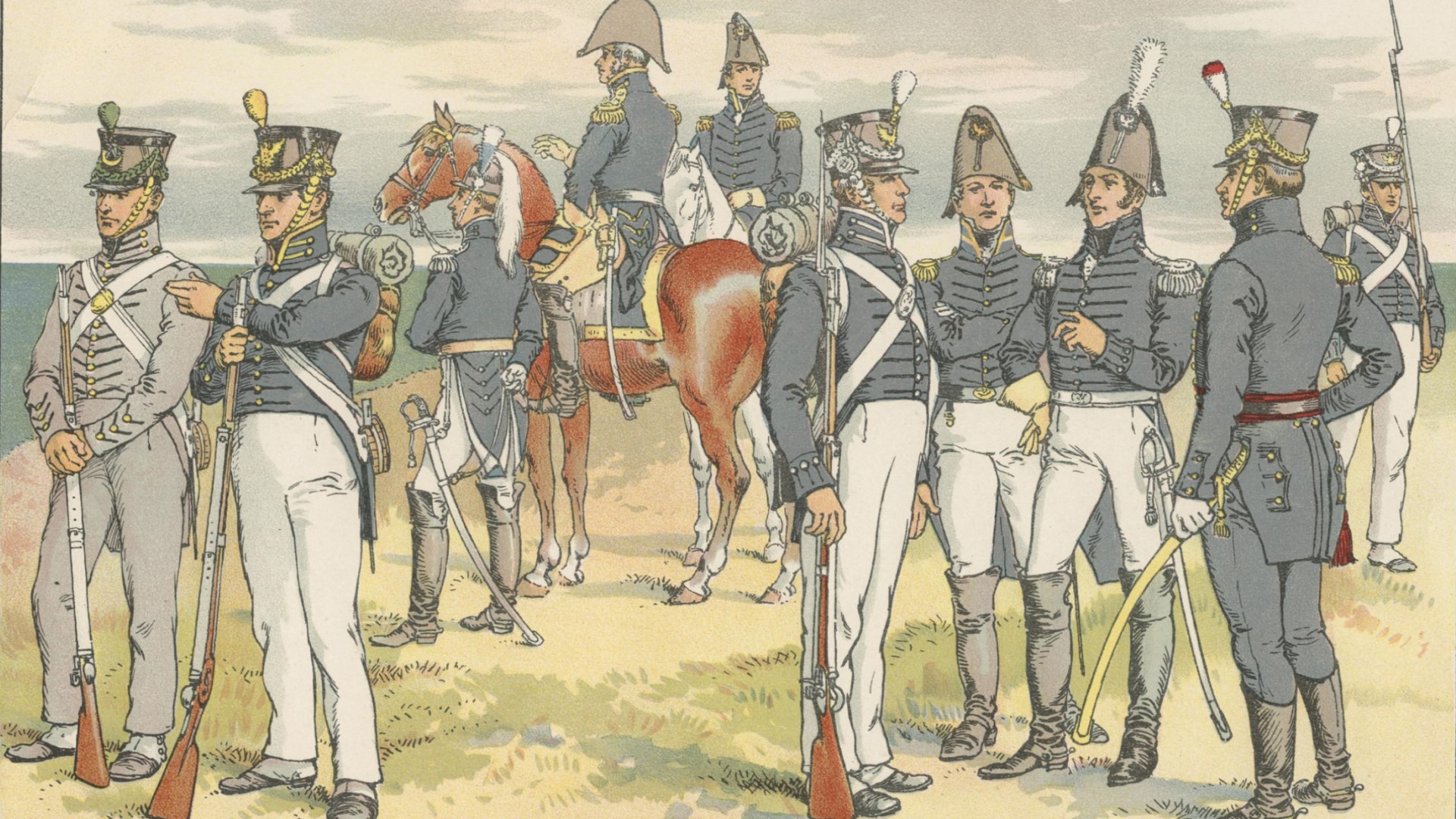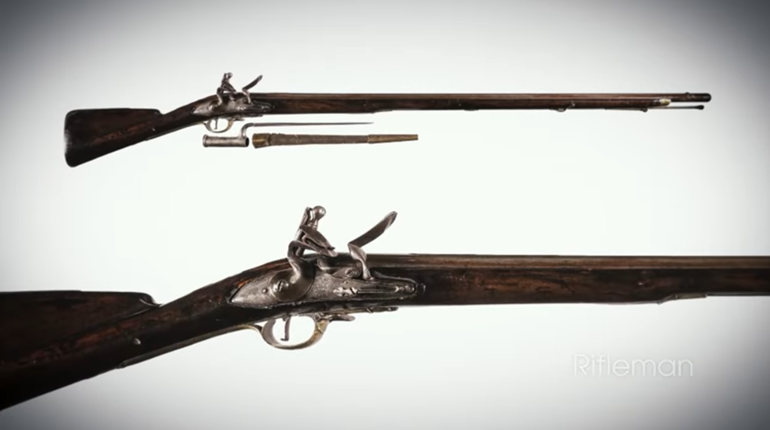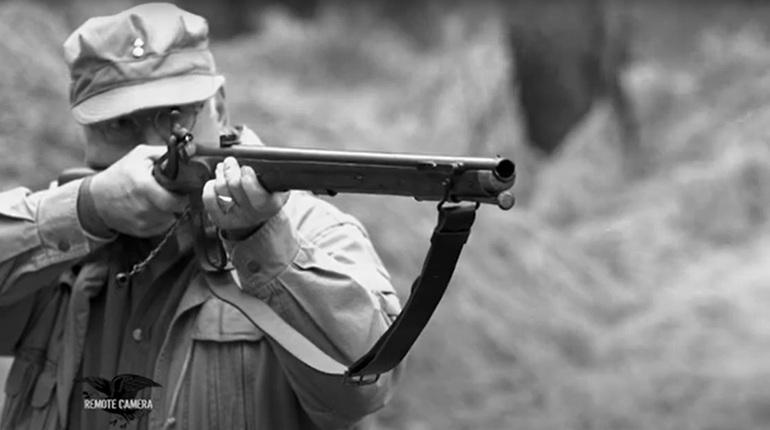
Described as “the work of art that killed,” the flintlock Kentucky rifle was the iconic firearm of America’s early wilderness, its golden age lasting from about 1780 to 1820. Carried by settlers and natives alike, despite its name, the iconic rifle was not made in Kentucky. Rather, the rifles were painstakingly handcrafted one at a time in small gun shops throughout Pennsylvania. So how, then, did the gun get its name? It’s an interesting, intriguing story, but before answering that question, here’s some background.
John Shrite of Reading, Pennsylvania, is credited with building the first Kentucky rifle in 1761, the .60-caliber gun having a barrel length of 43 5/16". In his book Thoughts on the Kentucky Rifle in Its Golden Age, Joe Kindig, Jr. writes:
“Though variations existed, a typical pre-revolutionary rifle was somewhat shorter and the butt was somewhat heavier than on rifles made twenty or forty years later, but in general, the Kentucky had attained by this time that character that distinguished it from all other firearms. It had an octagonal barrel forty or more inches long, a full graceful stock of plain or slightly curly maple, a brass patch box, other brass mounts, and possibly one or two silver inlays. The patch box was plain with very little engraving and possibly no piercings. The relief carving was simple and sparse.”
Today, custom Kentucky rifles continue to be built individually by a few master gunsmiths, but they are usually more decorative than the original guns—true works of art that sell for many thousands of dollars. Either way, new or old, the rifles are reminiscent of America’s frontier past.
The naming of the Kentucky rifle actually began with a song, first sung on stage by an actor named Noah Ludlow in May of 1822 at a theater in New Orleans, Louisiana. Prepping for his new act, Ludlow had borrowed from a local riverman a “buckskin hunting shirt and leggings, moccasins, a rifle, and an old slouched hat.” The audience that night was mainly rivermen—most half-drunk—including some who had fought with Brevet Major General Andrew Jackson, defeating the British at the Battle of New Orleans in 1815.
Following a warm-up comedy act, the stage curtains slowly parted revealing Ludlow in full costume, holding his rifle, saluting the audience smartly. He then stepped forward and began singing the first verse of a new ballad written by Samuel Woodward titled “The Hunters of Kentucky,” based on the Battle of New Orleans.
You gentlemen and ladies fair,
Who grace this famous city,
Just listen if you’ve time to spare,
Whilst I rehearse a ditty;
And for an opportunity,
Conceive yourselves quite lucky,
For ‘tis not often here you see
A hunter from Kentucky.
The audience immediately loved it, clapping and whooping so loudly that Ludlow had to wait for the din to die down before beginning the second verse.
We are a hardy freedom race,
Each man to fear a stranger,
Whate’er the game, we join in chase,
Despising toil and danger;
And if a daring foe annoys,
Whate’er his strength and forces,
We’ll show him that Kentucky boys
Are “alligator horses.”
Again the crowd roared its approval, even louder this time than the first. Gaining confidence from their boisterous, positive reaction to his new stage act, Ludlow belted out the third verse.
But Jackson he was wide awake,
And wasn’t scared at trifles,
For well he knew what aim we’d take
With our Kentucky rifles;
So he marched us down to Cypress Swamp,
The ground was low and mucky,
There stood John Bull [British soldiers] in martial pomp,
But here was old Kentucky.
Concluding the song, Ludlow immediately jerked the slouch hat from his head, threw it to the floor, dropped to one knee, and brought the rifle up to his shoulder as if drawing a bead on an enemy. The audience went crazy. Jumping to their feet, the rivermen stomped in approval, clapped, hollered, anything to make noise.
Ludlow remembered, “I was saluted with loud applause of hands and feet, and a prolonged howl, such as Indians give when they are extremely pleased.” Then, upon the audience’s insistence, Ludlow performed two encores that night, both times repeating “The Hunters of Kentucky” to standing ovations.
Ludlow was stunned. He had no idea the new song would be so well received and become so overwhelmingly popular. Everywhere he went during the ensuing years people would stop him and demand that he sing it. He eventually sang “Hunters” so often that he grew to despise it. Printing the lyrics, he distributed copies to newspapers all over the eastern U.S. so that readers could learn and sing the song themselves and quit bothering him. Unfortunately for Ludlow, it only made the matter worse.
Someone who saw an opportunity concerning the continuing popularity of the song, and took advantage of it, was Andrew Jackson. Adopting the tune as his campaign song during his 1828 presidential run, “Hunters of Kentucky” helped him win the White House.
But Jackson was not the only one to use the song to advantage. American gunsmiths at the time began advertising genuine “Kentucky rifles,” and as a result sales soared. And that, my firearms friends, is how the Kentucky rifle—invented some 60 years prior—got its name.







































